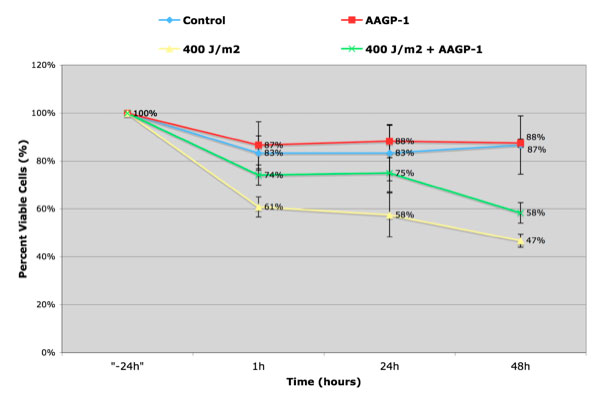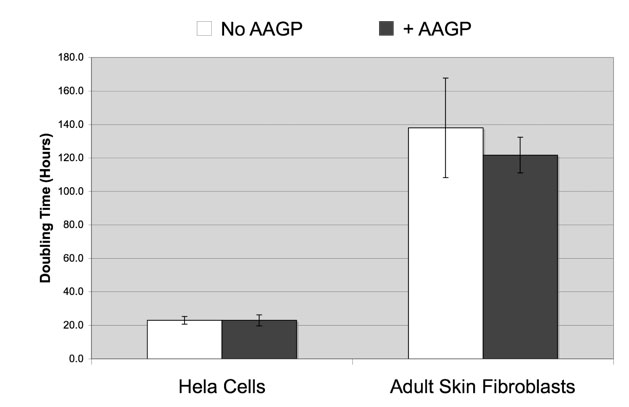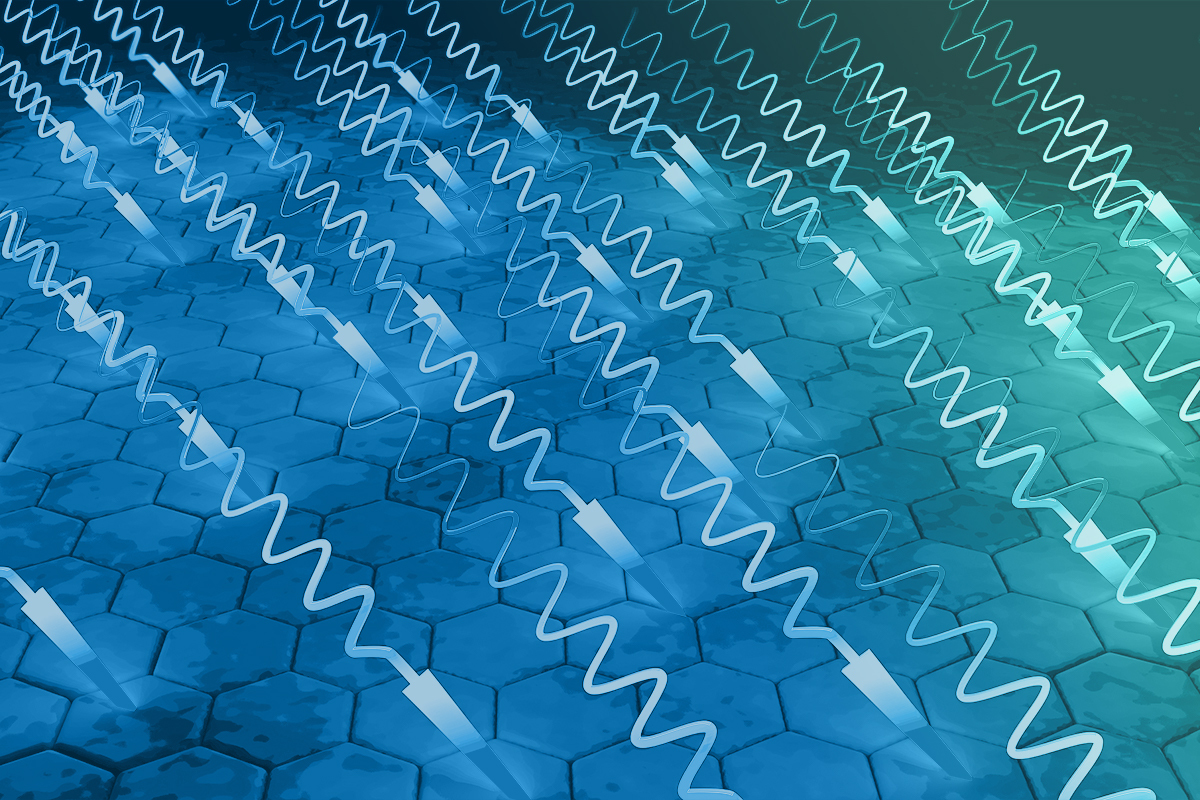Hussein and Palumbo, February 2007
Introduction
Method
Human adult primary skin fibroblasts and Hela cells were seeded in 96 well plates at a concentration of 9000 – 15000 cells per well. 24 hours after seeding either 0 or 5mg/ml AAGP® were added to the plates, with two plates being used for each concentration. All cell populations were then exposed to UVC (254nm) at 400J/m2 or UVA (365nm) at 10J/cm2. Post UVA/UVC exposure 5mg/ml AAGP® was again added to the non-control group.
Cell numbers were calculated for both the control and AAGP® populations at 1, 24 and 48 hours post UVA or UVC exposure using Trypan blue (2 consecutive counts per sample). To ensure that AAGP® was having no affect on cell proliferation, cell-doubling time was calculated for both cell lines with and without the presence of AAGP®.
Results
The most prominent results were found in human adult fibroblasts where AAGP® decreased UVA induced cell death by 25% (24 hours post exposure) in comparison to control cells (figure1). When exposed to UVC light the presence of AAGP® decreased cell death by 41%, 54% and 25% – 1, 24 and 48 hours post exposure respectively – in comparison to the control (figure 2).

Figure 1: Effect of AAGP® Treatment on UVC Exposed Adult Skin Fibroblasts.

AAGP® also had no affect on cell doubling time in either cell line. In addition the cell doubling time of human adult fibroblasts was found to be 120 hours showing the affects above were due to cell protection rather than increased proliferation.

